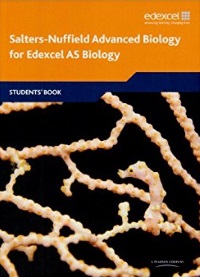SNAB AS topics

Here are topics and topic summaries for the Salters-Nuffield Advanced Biology context-led version of the Edexcel GCE Biology specification.
Topic 1 - Lifestyle, health and risk
This topic starts with two people's real-life experiences of cardiovascular disease building on the knowledge and understanding which students bring to the course from GCSE. The topic looks at the biology related to the heart and circulation. The role of diet and other lifestyle factors in maintaining good health is considered with particular reference to the heart and circulation and to cardiovascular disease (CVD). The structures and functions of some carbohydrates and lipids are also detailed within this context. Ideas about correlation, causation, and the concept of risks to health are covered.
Topic 2 - Genes and health
This topic uses the context of the genetic disease cystic fibrosis to consider the following biological principles: the properties of, and transport of materials, across cell membranes and gas exchange surfaces, DNA structure and replication, protein synthesis, enzymes and monohybrid inheritance. The potential that gene therapy offers as treatment for genetic conditions is examined. The topic also allows for discussion of the social and ethical issues surrounding the diagnosis and treatment of genetic conditions.
Topic 3 - The voice of the genome
This topic follows the story of the development of multicellular organisms from single cells to complex individuals. Cell structure and ultrastructure, cell division, the importance of fertilisation, the roles of stem cells, gene expression, cell differentiation and tissue organisation are all considered within this topic, as is the role of the genotype and the effect of the environment on phenotype.
Topic 4 - Biodiversity and natural resources
The topic focuses on biodiversity and the wealth of natural resources used by humans. The meaning of biodiversity is considered and how all this diversity has come about through adaptation and natural selection. It goes on to consider uses of natural resources including the use of plant fibres and the use of chemical extracts from animals and plants. The concern for disappearing biodiversity and loss of potential natural resources is used to highlight the need for biologists to identify, name and classify species. The topic finishes by looking at the role of zoos and seed banks in the conservation of endangered species.
For an overview of the unit content download the summary document.
